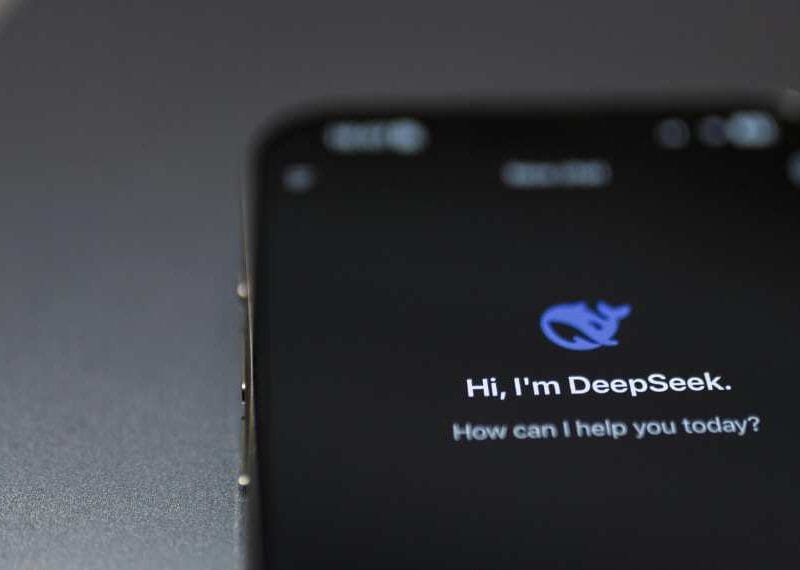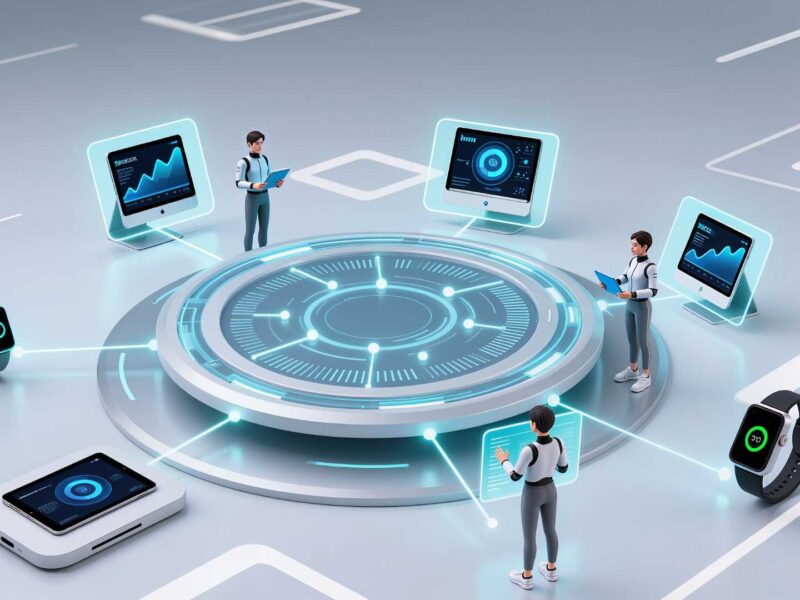AI That Wows and Works: Standout Innovations Making Headlines
Artificial Intelligence innovations are consistently making headlines, showcasing dazzling potential that often feels like science fiction.
Yet, amidst the flash and the futurism, a crucial question for business leaders and tech professionals is emerging:
Which AI advancements are not only attention-grabbing but are also delivering tangible, practical value right now, fundamentally reshaping workplaces and industries?
This inquiry moves beyond theoretical discussions to pinpoint real-world applications that truly impress and drive meaningful change.
This Techronicler article compiles invaluable insights from leading business executives, strategic thought leaders, and seasoned tech professionals, revealing their top picks for AI innovations that blend groundbreaking capabilities with immediate, measurable impact, offering a glimpse into the AI solutions that are actively shaping a more efficient, intelligent, and human-centric future.
Read on!
Synthetic Data Unlocks AI Progress in Sensitive Fields
One flashy but genuinely practical innovation we’re seeing in real use is privacy-preserving synthetic data generation, especially in computer vision.
At DataVLab, we support AI teams that need to annotate sensitive image data for use in sectors like healthcare, transportation, and public safety. In many of these cases, privacy constraints are a major barrier to model development. For example, annotating footage from a hospital or a street scene involves personal identifiers that require costly approvals or anonymization processes.
Synthetic data generation has emerged as a powerful solution but what’s most impressive is when it’s used not to replace real data entirely, but to surgically substitute privacy-sensitive elements like faces or license plates with GAN-generated surrogates. These AI-generated visual elements are indistinguishable from real ones for training purposes but carry no personal information.
This allows teams to continue building and labeling datasets without exposing PII, all while preserving the context and visual complexity needed for robust model training. It bridges the gap between privacy and performance in a way that’s technically impressive and highly usable in production.
We’ve worked on projects where this hybrid approach enabled annotation at scale for previously untouchable datasets, unlocking progress in medical diagnostics, traffic analysis, and retail behavior modeling.
What makes this innovation powerful isn’t just the deep learning behind the synthetic generation, it’s how it fits into existing workflows. Tools can now auto-swap out privacy elements before data even reaches the labeling stage, meaning privacy-by-design is becoming a built-in part of the AI pipeline rather than an afterthought.
It’s a flashy innovation, yes, but its practicality lies in enabling AI development in sectors where real-world data constraints used to halt progress.

Roy Andraos
CEO, DataVLab
AI Content Assistants Boost Marketing Creativity
One AI innovation that really grabbed my attention lately is the rise of AI-powered content assistants, think of them as your marketing sidekick on steroids. These tools help craft content that sounds human but is backed by data, saving time and cutting down on writer’s block. What’s cool is how they adapt to different voices and styles, making it feel like you’ve got a creative partner, not a robot.
This tech doesn’t just spit out words; it helps marketers focus on strategy while automating the grunt work. It’s like having a smart intern who never calls in sick. The best part? It frees up mental space to think bigger and bolder.
In fast-moving marketing, tools like this are a game changer. They don’t replace creativity, they boost it, giving teams more room to shine without drowning in details. Now that’s innovation worth shouting about.

Nick Mikhalenkov
SEO Manager, Nine Peaks Media
AI Scheduling Tools Cut Roofing Project Delays 30%
Right now, AI-driven automation in the roofing business, namely in project management, and communications with customers is being used. Being a participant in the roofing market modernization, I have witnessed the effect of such AI tools as chatbots and predictive scheduling on the customer experience.
These tools assist the contractors to track the schedule of projects by estimating the likely delays or chatter in schedules. AI is able to process the weather data, the availability of contractors and delivery times of the materials to reschedule in real time. This has radically enhanced efficiency saving the homeowners time and money.
An example of one of the firms I am aware of is that they experienced a 30 percent decrease in project delays when they integrated AI-based scheduling tools. It is an actionable, hands-on solution that makes operations streamlined but not in a flashy complex way as many may attribute to AI. It is interested in resolving the actual industry pain point and enhancing transparency.

Todd Stephenson
Co-founder, Roof Quotes
AI Design Tools Reduce Renovation Mistakes, Save Time
I heard of an AI innovation that combines technology and actual construction. Artificial intelligence software is beginning to transform the way we design projects, particularly cases of renovation.
Consider a tool that will allow scanning your existing space and analyzing it in real-time and give the recommendations related to the layout changes using the live data. It is not only the matter of beautiful renderings but it can predict how particular materials will work with the space that will help to avoid expensive mistakes.
As an example, it is able to predict how a certain cabinet design will affect the circulation of the room or it can determine the amount of natural light that a room will receive at various times of the day. Such AI is responsive in nature and provides feedback in real-time, which directly impacts decisions in the design process. I have witnessed a reduction in project time going up to 15 percent when using some of the prototypes which save the homeowners both time and finances without compromising quality.

Tim Watson
Kitchen & Bathroom Renovator, Founder & Director, Oakridge Renovations
AI Voiceovers Turn Blog Content into Viral Videos
One of the most practical AI innovations I’ve seen recently is the rise of AI-generated voiceovers for short-form content.
At What Kind of Bug Is This, we tested using ElevenLabs to turn blog snippets into TikTok and YouTube Shorts with natural-sounding narration—no on-camera talent required. It lets us repurpose existing content into video without hiring voice actors or spending hours editing audio. What seemed like a gimmick at first actually helped us reach a whole new segment of searchers who prefer listening or scrolling over reading.
What impressed me most was how plug-and-play it’s become. We could script and publish a video in under 30 minutes that felt polished enough for mobile viewers. It made our content more accessible and broadened our reach without adding headcount. Flashy? Sure. But also incredibly practical for a lean team that needs to stretch every piece of content as far as possible. That’s the kind of innovation I’ll take all day.
AI Agents Complete Tasks Through Web Browser Interaction
I’ve been digging into AI breakthroughs that provide actual value in the world beyond the hype. One high-profile accomplishment is OpenAI’s Operator, an AI agent that can autonomously work and complete tasks through interactions with web browsers — submitting forms, ordering items online, or scheduling appointments. This service also mitigates administrative work.
Another example is AlphaEvolve at Google DeepMind, an evolutionary coding agent that uses big language models to evolve better algorithms. By automating the design of algorithms, AlphaEvolve can help discover faster and more efficient solutions in data processing or machine learning model optimization, among others.
Machine learning models are used for various use cases, including logistics to optimize routes and reduce fuel, healthcare to predict patients at risk to prevent hospitalization, and so on.
For companies such as LAXcar, it is essential to stay informed of such improvements. When teams can focus on delivering exceptional customer experiences, they can’t afford to be distracted by day-to-day tasks. AI tools that can automate everyday tasks let them do just that. As AI becomes more developed, more business applications of AI will certainly be integrated into business models in different fields.

Arsen Misakyan
CEO & Founder, LAXcar
AI Inventory System Cuts Costs While Improving Fulfillment
I’ve had a front-row seat to the AI revolution in logistics, and one innovation that’s genuinely impressed me is AI-powered predictive inventory optimization. This isn’t just flashy tech for tech’s sake—it’s solving real problems for e-commerce businesses right now.
Last month, I visited a mid-sized beauty brand partner who implemented an AI system that reduced their inventory carrying costs by 32% while maintaining 99.8% order fulfillment rates. The system analyzes thousands of variables—seasonal trends, supplier lead times, even social media sentiment—to make inventory decisions that would take humans weeks to calculate.
What fascinates me is how this technology democratizes sophisticated inventory management. Previously, only enterprise giants could afford these capabilities, but now we’re seeing 3PLs offering this intelligence as a standard service to businesses of all sizes.
One practical case: we recently matched an outdoor gear client with a 3PL using AI forecasting. Their previous approach required keeping 4 months of inventory on hand as a buffer. With AI predicting demand patterns with 93% accuracy, they reduced inventory by 43% while actually improving fulfillment speed. That’s capital freed up to invest in growth rather than gathering dust on warehouse shelves.
The most exciting aspect is that these systems continuously learn. When the pandemic disrupted supply chains, the AI models quickly adapted to new patterns without requiring a complete rebuild.
For e-commerce businesses dealing with rising storage costs and customer expectations, this isn’t a “nice to have”—it’s becoming essential. We’ve moved beyond the hype cycle to practical implementation that delivers measurable ROI.
I believe we’re only scratching the surface. As these systems mature, they’re beginning to integrate with other technologies like automated picking robots and dynamic warehouse slotting, creating end-to-end intelligent fulfillment networks that are both more efficient and more resilient.

Joe Spisak
CEO, Fulfill
DeepMind Robots Master Complex Physical Tasks
One of the most pragmatic and interesting AI breakthroughs I’ve seen recently is Google DeepMind’s Gemini Robots, which can perform tasks such as folding origami and sorting messy desks. This is in contrast to other flashy AI demos that may come across as too impractical for the real world, demonstrating a significant step forward in AI’s ability to coordinate complex, physical tasks in active environments.
Another is Google’s “Stitch” from Google I/O 2025, which is an AI design assistant. Stitch can develop product user interface designs and front-end code from plain text descriptions or sketches directly. It streamlines the design and development process, letting you prototype and iterate on interfaces with far more speed, and saves you hundreds of hours of development time – the development of music-related applications can become a more creative and efficient process.

Rob Dillan
Founder, EVhype
Enterprise Software Copilots Amplify Existing Workflow Productivity
One AI innovation that stands out is generative AI copilots integrated directly into enterprise software—like Microsoft’s Copilot for Office 365 or GitHub Copilot for developers. It’s flashy because it feels like having an intelligent assistant embedded in tools people already use daily, but it’s also very practical.
For example, in a business context, AI can draft emails, summarize documents, or create pivot tables in Excel from natural language prompts. For developers, it suggests entire code blocks, tests, and even architecture patterns based on context.
What makes this particularly impactful is how it reduces friction in day-to-day tasks. Instead of replacing workflows, it amplifies productivity without requiring users to learn a completely new system. The blend of convenience and deep integration is why it’s more than just hype—it’s already changing how teams work.

Vipul Mehta
Co-Founder & CTO, WeblineGlobal
On behalf of the Techronicler community of readers, we thank these leaders and experts for taking the time to share valuable insights that stem from years of experience and in-depth expertise in their respective niches.
If you wish to showcase your experience and expertise, participate in industry-leading discussions, and add visibility and impact to your personal brand and business, get in touch with the Techronicler team to feature in our fast-growing publication.












